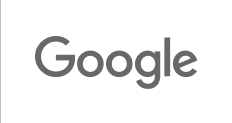
CASE STUDY
02/04
PROTECTION
GROUP
INTL’
CASE STUDY
02/04
PROTECTION
GROUP INTL
Client: Protection Group International
Sector: Cyber security + intelligence
Protection Group International (PGI) is a cybersecurity and intelligence consultancy working across corporate, government and humanitarian sectors. They operate in complex, high-trust environments, where clarity, discretion and authority are critical. Internally, PGI had recently completed a series of brand strategy workshops, defining a clearer sense of their values, tone and future direction. But the existing identity wasn’t equipped to express it. Visually, the brand felt generic, outdated and overly corporate, indistinct from the broader risk and compliance category. It lacked cohesion, and it didn’t reflect the ingenuity or quiet confidence of the people behind it.
Role: Creative Lead, Design Director
Scope: Visual identity rebrand
There were two key constraints. First, PGI’s logo, a circular shield housing the company’s initials, had to remain conceptually intact to maintain recognition among existing clients. While I was able to refine its execution, the underlying symbol stayed fixed. Second, much of PGI’s work is confidential. With NDAs in place, the brand couldn’t rely on client logos or case studies to tell its story. This meant the system around the logo had to work harder, and reflect PGI’s expertise without relying on proof points. The brief wasn’t just to modernise. It was to bring alignment, build clarity, and create a brand that
felt quietly, but unmistakably, in control.
A challenge
WHAT CAME BEFORE: The existing identity was dated, inconsistent, and visually underpowered. Gold accents and generic typography gave it an off-the-shelf finance feel, while clichéd stock imagery did little to build trust. There was no clear hierarchy, no real system, and no sign of the human intelligence behind the work. A brand built for generic safety, not strategic clarity.
Discovery sessions, brand audits and competitor analysis revealed an opportunity to reposition PGI with more clarity and control. While most competitors leaned on generic cues, cold, technical, or overly corporate, PGI stood apart in substance. The new identity needed to reflect that difference with precision. Three creative territories were developed: Discreet Integrity, Human Ingenuity, and Confident Innovation. Each explored a different articulation of PGI’s values and tone of voice. The chosen route, Discreet Integrity, captured the brand’s core character: composed, credible, and quietly assured. With a voice defined as authoritative, discreet and eminent, the system had to communicate trust and expertise, not through volume, but through thoughtful restraint and confident design.
With the core PGI mark fixed, the surrounding system needed to do the heavy lifting, signalling change without disrupting recognition. I built a modular language rooted in geometry: the circle, representing unity, discretion and protection; and the square, evoking order, clarity and control. These forms became the backbone of the system, shaping layout, framing imagery, and anchoring information with quiet precision. Typography is neutral but confident. Colour is bold in principle, but used sparingly, Data Lime and Digital Heaven acting as cues for attention, not decoration. Every element was designed to feel deliberate, unflustered and composed, a brand that knows what to say, and when to hold back.
The solution
MINIMAL MOVES, MAXIMUM MEANING: A single shape, deployed with care. The circle anchors PGI’s logomark, but also works as layout device, symbol and spatial counterpoint. In monochrome contexts, the palette recedes to focus on clarity and tactility. Elsewhere, colour can be dialled up to signal energy and intent. A system built for contrast, not consistency for its own sake.
The primary typeface was chosen for its geometric clarity and subtle warmth, clean and modern, but never sterile. It’s confident without trying too hard, balancing technical precision with just enough softness to feel approachable. Used consistently across applications, it creates structure, pace and rhythm without demanding attention. Set with generous spacing and deliberate restraint, it reflects PGI’s core values: intelligent, composed, and never overstated.
GEOMETRY, CLARITY AND THE HUMAN SIGNAL: Every element in the system plays a deliberate role. Geometric forms anchor structure; colour is used sparingly to support clarity. Typography brings quiet authority, while photography balances the abstract and the human, pairing symbolism with real presence. Together, they create a visual language that feels composed, intelligent and inherently PGI.
The result
The signs of impact within two years of the rebrand were clear. Turnover rose to nearly £9.9 million, a year-on-year increase of more than 20%, and PGI moved from a pre-tax loss into profitability, marking a tangible shift in commercial performance. LinkedIn engagement rose steadily, with follower growth of over 30%, while headcount expanded by nearly 20%, reflecting internal confidence and capacity. Beyond the metrics, the system has been fully adopted across key channels, from pitch decks and training templates to client reports and internal comms. The design toolkit is now used by in-house teams and
external partners alike, with a shared visual language bringing greater coherence, clarity and confidence to everything PGI produces Crucially, the identity has helped PGI articulate who they are, even when NDA's prevent them from saying exactly what they do. In a space where projects are confidential, trust is non-negotiable, and visibility is limited, the brand now works harder: making expertise tangible, signalling credibility at every touchpoint, and creating the conditions for quiet influence. It doesn’t shout. It doesn’t showboat. It holds its ground, and gets out of the way when it needs to.
CALLALY /
Lorem ipsum dolor sit amet consectetur. Egestas mauris amet consectetur amet tincidunt feugiat. Amet eget sed pharetra
VIEW NEXT PROJECT /




















